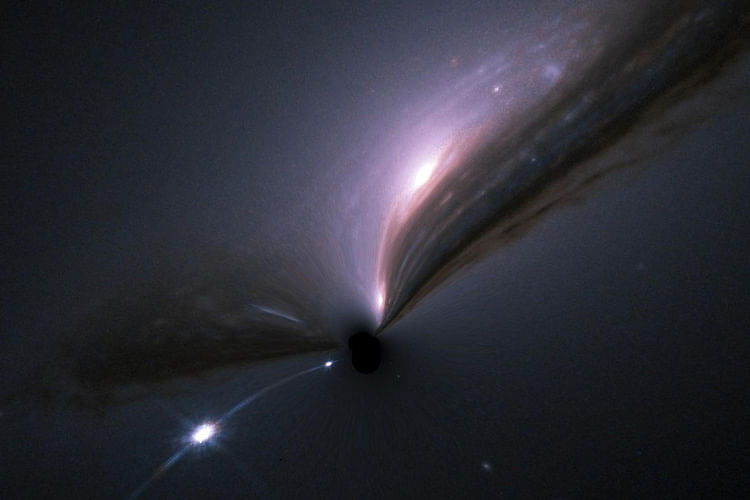
None of the universe's dark matter consists of heavy black holes or any similar object, including the massive compact halo objects (MACHOs), according to a study that challenges the existing notions about the mysterious material.
After the detection of gravitational waves from colliding black holes in 2015, astronomers held out hope that dark matter might consist of a plenitude of black holes sprinkled throughout the universe.
Researchers from the University of California, Berkeley in the US analysed 740 of the brightest supernovas discovered as of 2014.
They noted that none of them appear to be magnified or brightened by hidden black hole "gravitational lenses," and that primordial black holes can make up no more than about 40 per cent of the dark matter in the universe.
Primordial black holes could only have been created within the first milliseconds of the Big Bang as regions of the universe with a concentrated mass tens or hundreds of times that of the Sun collapsed into objects a hundred kilometers across, researchers said.
The results, published in the journal Physical Review Letters, suggest that none of the universe's dark matter consists of heavy black holes, or any similar object, including massive compact halo objects, so-called MACHOs.
Dark matter is one of astronomy's most embarrassing conundrums: despite comprising 84.5 per cent of the matter in the universe, no one can find it.
Proposed dark matter candidates span nearly 90 orders of magnitude in mass, from ultralight particles like axions to MACHOs.
Several theorists have proposed scenarios in which there are multiple types of dark matter, researchers said.
However, if dark matter consists of several unrelated components, each would require a different explanation for its origin, which makes the models very complex, they said.
"I can imagine it being two types of black holes, very heavy and very light ones, or black holes and new particles," said Miguel Zumalacarregui, a Marie Curie Global Fellow at the University of California, Berkeley.
"But in that case one of the components is orders of magnitude heavier than the other, and they need to be produced in comparable abundance," Zumalacarregui said.
Their conclusions are based on the fact that an unseen population of primordial black holes, or any massive compact object, would gravitationally bend and magnify light from distant objects on its way to Earth.
Gravitational lensing should affect the light from distant Type Ia supernovas, researchers said.
These are the exploding stars that scientists have used as standard brightness sources to measure cosmic distances and document the expansion of the universe, they said.